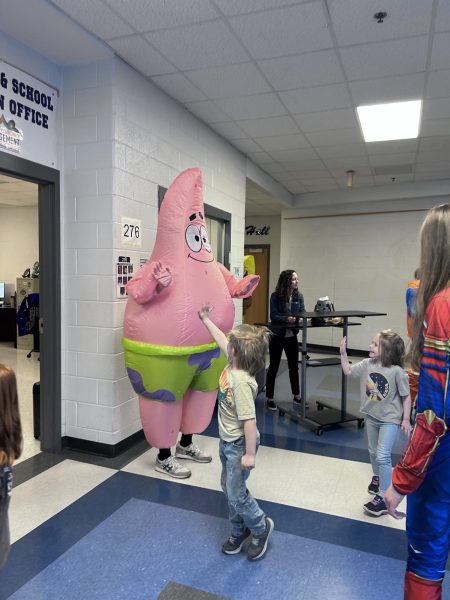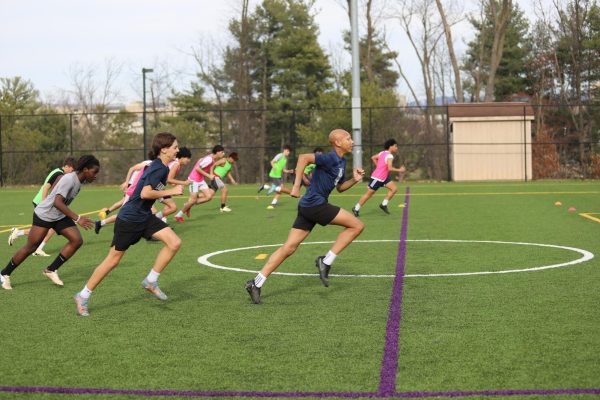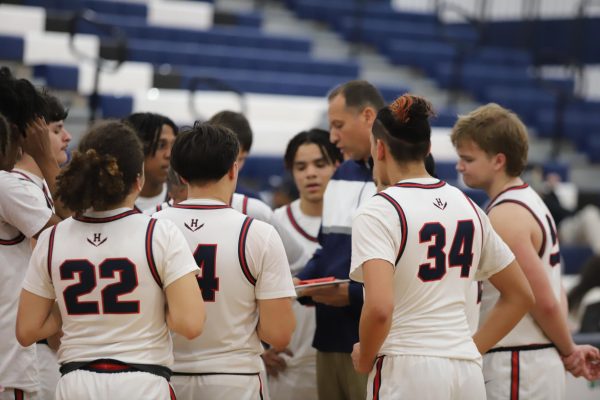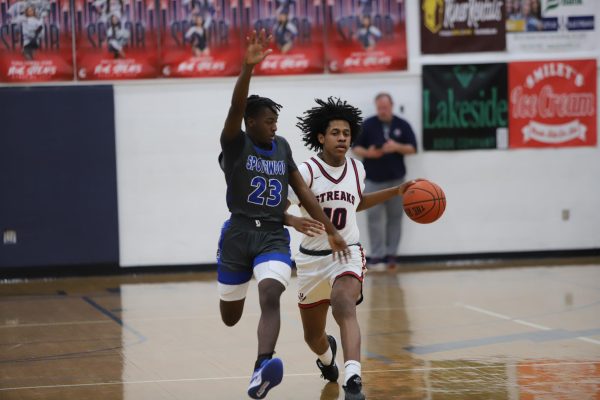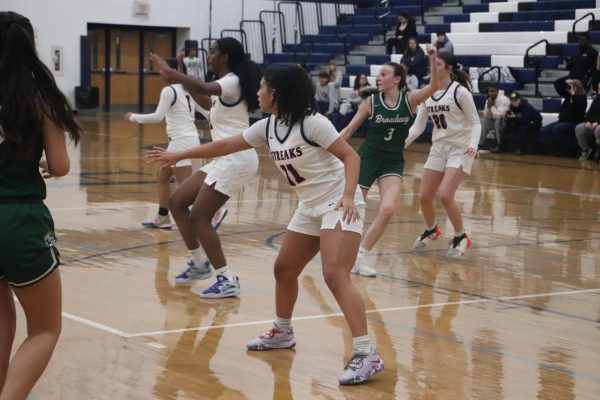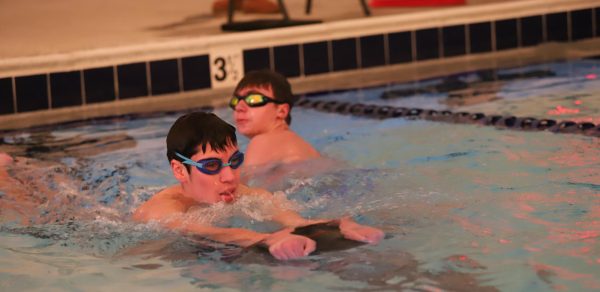2017 NFL Draft picks
January 5, 2017
With the 2016 NFL season coming to a close, the 2017 NFL Draft is on the horizon, giving teams a chance to sign a possibly franchise-changing player. Here are my first round predictions, with a summary of each pick.
- Cleveland Browns (1-15): Myles Garrett- Defensive End, Texas A&M: Garrett is widely considered to be the best overall player in the draft, and is a true game changer on the defensive line. While the Browns biggest needs are at quarterback and interior offensive line, they are a very weak team overall, and could certainly use the defensive help.
- San Francisco 49ers (2-14): Mitch Trubisky- Quarterback, North Carolina: It’s safe to say that neither the Blaine Gabbert nor the Colin Kaepernick experiment worked out very well in the Bay Area this year. The Niners need a quarterback ASAP, and Trubisky is the best available. He brings athleticism, as well as a strong arm. Trubisky will need to improve his decision making if he wants to be a day one starter, but the pick will bode well for San Francisco over time.
- Chicago Bears (3-13): DeShone Kizer- Quarterback, Notre Dame: The Jay Cutler era is thankfully over in Chicago, and Matt Barkley isn’t exactly the ideal solution for the future. Kizer looks to be the most NFL ready quarterback in the draft, though he doesn’t have quite as well-rounded a game as Trubisky. It may take a year or two, but Chicago should have a reliable option for a QB in the near future.
- Jacksonville Jaguars (3-13): Jonathan Allen- Defensive Tackle, Alabama: In a season where the Jaguars were considered a sleeper pick to make the playoffs, they severely underwhelmed, winning just three games. The defensive line struggled for the most part, and Allen was a dominating force with the Crimson Tide. Allen will be a day one starter with the Jags, and will be a huge addition to a struggling defense.
- Tennessee Titans (9-7) (from Los Angeles Rams): Marlon Humphrey- Cornerback, Alabama: The Titans acquired the fifth pick from LA, and with a badly struggling secondary, will be hard pressed to select a corner. Despite being just a redshirt sophomore, Humphrey has been one of the nation’s best corners and would be a wise selection for Tennessee. He may not yet be ready to start, but the potential for the Crimson Tide corner is off the charts.
- New York Jets (5-11): Tim Williams- Edge Rusher, Alabama: In a well below average season for the Jets, the main problem was QB, but 2016 second round pick Christian Hackenberg is ready to take over, so the need turns to the edge. Williams combined with Jonathan Allen (pick #4) to create a formidable duo for Alabama. Williams is very versatile, able to play both defensive end and linebacker, as he has a great combination of speed and strength to dominate the edge.
- San Diego Chargers (5-11): Mike Williams- Wide Receiver, Clemson: While Dontrelle Inman has emerged as a solid receiver, the Chargers still don’t have a true WR1, as Keenan Allen continues to deal with injuries. Williams, out of Clemson, could bring that to the team almost immediately. More weapons at receiver could make the give a boost to the already talented veteran Philip Rivers.
- Carolina Panthers (6-10): Cam Robinson- Offensive Tackle, Alabama: Panthers QB Cam Newton took hit after hit this season as the Panthers regressed from a 15-1 team to a 6-10 squad with plenty of issues, particularly on the offensive line. Robinson is the top tackle in the draft and will be a huge help in protecting Newton’s blind side and keeping his facemask out of the turf.
- Cincinnati Bengals (6-9-1) : Reuben Foster- Inside Linebacker, Alabama: The Bengals run of playoff appearances ended this year with an incredibly disappointing 6-9-1 season, with linebacker becoming a weakness on the roster. As the fifth Crimson Tide player drafted already, Foster was a force in the middle of the Alabama defense, and will bring an incredibly well-rounded game to the NFL, likely being able to start right away.
- Buffalo Bills (7-9): Malik Hooker- Safety, Ohio State: The Bills’ roster holes showed in a big way this year, particularly in the secondary. Strong safety Aaron Williams’ career is in jeopardy after a brutal neck injury suffered on a cheap shot from Dolphins receiver Jarvis Landry, and free safety Corey Graham is on his last legs, with not very adequate backups. Hooker was one of the stars of the Buckeyes D, and after previously saying he would return to school, the redshirt sophomore declared for the draft after the Buckeyes fell to Clemson. Hooker will be the first step in solving Buffalo’s issues at defensive back.
- New Orleans Saints (7-9): Jabrill Peppers- Safety/Linebacker, Michigan: The Saints have had a terrible defense for many years now, so bad that even with a quarterback approaching 40 years old, QB isn’t nearly a priority yet. Peppers was arguably the most versatile player in college football, able to play safety and linebacker as well as returning kicks and punts and providing help on offense. His athleticism will be a huge addition to a team that has to face Cam Newton, Jameis Winston and Matt Ryan twice a year.
- Cleveland Browns (1-15) (from Philadelphia Eagles): Deshaun Watson- Quarterback, Clemson: Cleveland will have to address their ever-existing need at quarterback in the draft, and Watson is just as talented as they come, competing with Kizer and Trubisky for the top QB in the draft. He has a good deep ball with solid accuracy, as well as good athleticism. Watson will start from day one in Cleveland and will become the foundation for the rebuilding process.
- Arizona Cardinals (7-8-1): Adoree’ Jackson- Cornerback, USC: Jackson is USC’s Jabrill Peppers, with possibly even higher potential. Jackson’s main position is cornerback, but also gets involved in both the rushing and receiving game, scoring double digit offensive touchdowns in college. Jackson will help bring consistency to a Cardinals secondary that couldn’t seem to play consecutive good games this season.
- Indianapolis Colts (8-8): Leonard Fournette- Running Back, LSU: While Frank Gore has sneakily become one of the best running backs in NFL history, he’s probably nearing the end. The Colts didn’t have a running game before Gore, and won’t after him unless they get help now. Fournette, while he did deal with some injuries during his final college season, had one of the more dominant college careers in recent memory, with LeGarrette Blount type strength combined with LeSean McCoy type agility and speed, and will be a rookie of the year contender.
- Philadelphia Eagles (7-9) (from Minnesota Vikings): John Ross- Wide Receiver, Washington: Carson Wentz had a decent rookie season, but he may have been even better with some more weapons in the receiving game. Ross is small, but has great hands to go along with breakneck speed that can leave even the best NFL corners in the dust. He should become a solid WR2 or WR1 over his first couple of seasons, with the potential to be a Pro Bowler.
- Baltimore Ravens (8-8): Jamal Adams- Safety, LSU: Ever since Ed Reed retired, safety has been a bit of weak spot in Baltimore. They have Eric Weddle, but the depth is below average, and could use a boost. Adams was one of the top DBs in college football at LSU, and will battle for a starting spot as a rookie.
- Washington Redskins (8-7-1): Derek Barnett- Defensive End, Tennessee: Barnett gradually rose up the draft boards throughout the season and finished as the consensus #2 DE in the country. Washington has a big need on the D-line, and Barnett could be a big piece in helping to fill it, as he has high potential with a pretty high floor as well. The Skins may be lucky if Barnett falls this far, but it’s possible, as not many teams above have needs for defensive linemen.
- Tennessee Titans (9-7): Corey Davis- Wide Receiver, Western Michigan: The Titans need a receiver. Tajae Sharpe emerged this season, but he isn’t a true WR1, and Davis has the potential to be one. If he was at a bigger school, he might be the first receiver off the board, but he played well against Wisconsin in the Cotton Bowl, keeping his stock pretty high. He should become one of Marcus Mariota’s top targets from the get-go.
- Tampa Bay Buccaneers (9-7): Solomon Thomas- Defensive End, Stanford: Like Washington, the Buccaneers need help on the defensive line aside from Gerald McCoy. Thomas had a crazy game against North Carolina in the Sun Bowl, disrupting Mitch Trubisky throughout the entire game, and causing problems for the Tar Heels running game. The 19th pick may be a bit of a reach, but Tampa needs the help. It may take Thomas a little while to develop to full potential, but he has the skills and size to be very good someday.
- Denver Broncos (9-7): Ryan Ramczyk- Offensive Tackle, Wisconsin: Russell Okung has struggled to protect Siemian/Lynch this season, and Denver will look to fill in the hole at that spot. Ramczyk dominated the Big Ten with the Badgers, and should be a solid NFL tackle, although a late-season hip injury may affect his decision on possibly returning for his senior season.
- Detroit Lions (9-7): Zach Cunningham- Inside Linebacker, Vanderbilt: Cunningham is arguably the most athletic linebacker in the draft, with the ability to cover and provide pressure in the backfield. The Lions need more versatility at the position, particularly in coverage, to take stress off of their corners and safeties. Look for Cunningham to slide into the middle of the Detroit defense in Week 1.
- Miami Dolphins (10-6): Charles Harris- Defensive End, Missouri: Miami cut former #1 overall pick Mario Williams, making defensive end an open spot for the Dolphins, who are in the playoffs for the first time since 2008. Harris, while he’s a little bit undersized, has the skills to become a starter in his rookie year. Harris could team up with Ndamukong Suh to create a formidable D-line duo.
- New York Giants (11-5): Dalvin Cook- Running Back, Florida State: Cook was considered by some to be even better than Fournette. I wouldn’t go that far, but Cook was a heck of a running back at Florida State, and looks to have skills that translate well to the NFL. He’ll get lots of carries in a Giants offense that is currently a running back by committee.
- Oakland Raiders (12-4): Teez Tabor- Cornerback, Florida: Oakland made lots of changes in their secondary last offseason, but it didn’t have much of an effect, as the unit struggled again this year, especially at corner. Tabor was one of the SEC’s best corners, and has good size at 6’0, 201 pounds. He hasn’t yet declared, but if he does decide to forgo his senior year, he won’t wait long to hear his name called on draft night.
- Houston Texans (9-7): Quenton Nelson- Offensive Guard, Notre Dame: Nelson is one of the best run-blocking linemen in all of college football, and at 6’5”, 325 pounds, he can deal with almost any NFL lineman. With the Texans’ passing struggles, Lamar Miller will be leaned on in 2017, and an improvement to the interior line will help that be a success for Houston.
- Green Bay Packers (10-6): Sidney Jones- Cornerback, Washington: Jones has started all three years he’s been at Washington, and has shown good skills both in tackling and coverage. Green Bay needs to fix the cornerback spot up, and Jones is the best available at this spot in the draft. He may not be a day one starter, but look for him to produce as a rookie.
- Seattle Seahawks (10-5-1): Roderick Johnson- Offensive Tackle, Florida State: Seattle’s offensive line has shown plenty of weak spots this season, particularly at left tackle, which is being manned by a former tight end who only played one year of college football. Johnson, at 6’7”, 311 pounds, may be able to step in and fill that spot immediately. He had a heck of a career at FSU, taking over the starting job halfway through his freshman year and never looking back.
- Pittsburgh Steelers (11-5): Takkarist McKinley- Edge Rusher, UCLA: Even in a bad season for UCLA as a whole, McKinley shined all season, particularly against Utah, when he picked up three sacks and forced two fumbles. Pittsburgh needs help on the edge, and McKinley, who can play both down and up, will be a big piece in fixing the Steelers’ biggest hole.
- Atlanta Falcons (11-5): Charles Walker- Defensive Tackle, Oklahoma: The Falcons’ defense has never been their biggest strength, but with the emergence of Vic Beasley on the edge, the newest hole in Atlanta’s D is in the interior of the line. Walker is an incredibly talented player at 6’3”, 305 pounds, who should bring physicality and toughness to the defensive line. There are some concerns about him leaving his college team early to prepare for the draft, especially as he missed a month of the 2016 season with a concussion, but Walker will still likely go in the first round.
- Kansas City Chiefs (12-4): Desmond King- Cornerback, Iowa: Behind Marcus Peters, the Chiefs’ secondary has seen a decline over the past couple years, and drafting college football’s best man coverage corner, who’s also a good tackler, could be critical in building up the KC defense. King will probably start as a nickel or dime back, but will slide into a starting role pretty quickly.
- Dallas Cowboys (13-3): OJ Howard- Tight End, Alabama: Jason Witten has had a long, efficient, productive career, but in his mid-30s, he’s beginning to decline. Gavin Escobar hasn’t developed as the Cowboys would hope, so a backup tight end, with potential to start later, is a priority. Howard has been college football’s top tight end for the last two years, with great size at 6’6”, 242 pounds and great receiving ability.
- New England Patriots (14-2): Haason Reddick- Outside Linebacker, Temple: Taking Reddick at the end of the first round might be a bit of a reach, but the midseason trade of Jamie Collins leaves the OLB spot open on the New England defense, and investing in a replacement who has potential would be a good move.




